► Peugeot’s big selling SUV goes electric
► Two battery options, front or four-wheel drive
► First outing for the STLA Medium platform
Any brand new car is a big deal, but the Peugeot E-3008 isn’t just a new car. Underneath the freshly coupeified shell is the first usage of Stellantis’s STLA Medium platform that’ll go on to underpin all manner of cars and SUVs across the group. It’s been designed to compete with the best electric cars, but ICE and hybrid versions are also in the pipeline.
Pros: Quiet, appealing interior, impressive range on paper
Cons: Lacks driver engagement, rivals offer more rear space
What’s new?
Everything. Not only is the platform new, there’s also brand new batteries and electric motors delivering more range and power than what you’ll find in the smaller E-2008 SUV. The interior builds on the outgoing 3008’s dramatic design whilst culling buttons and upping the digital real estate.
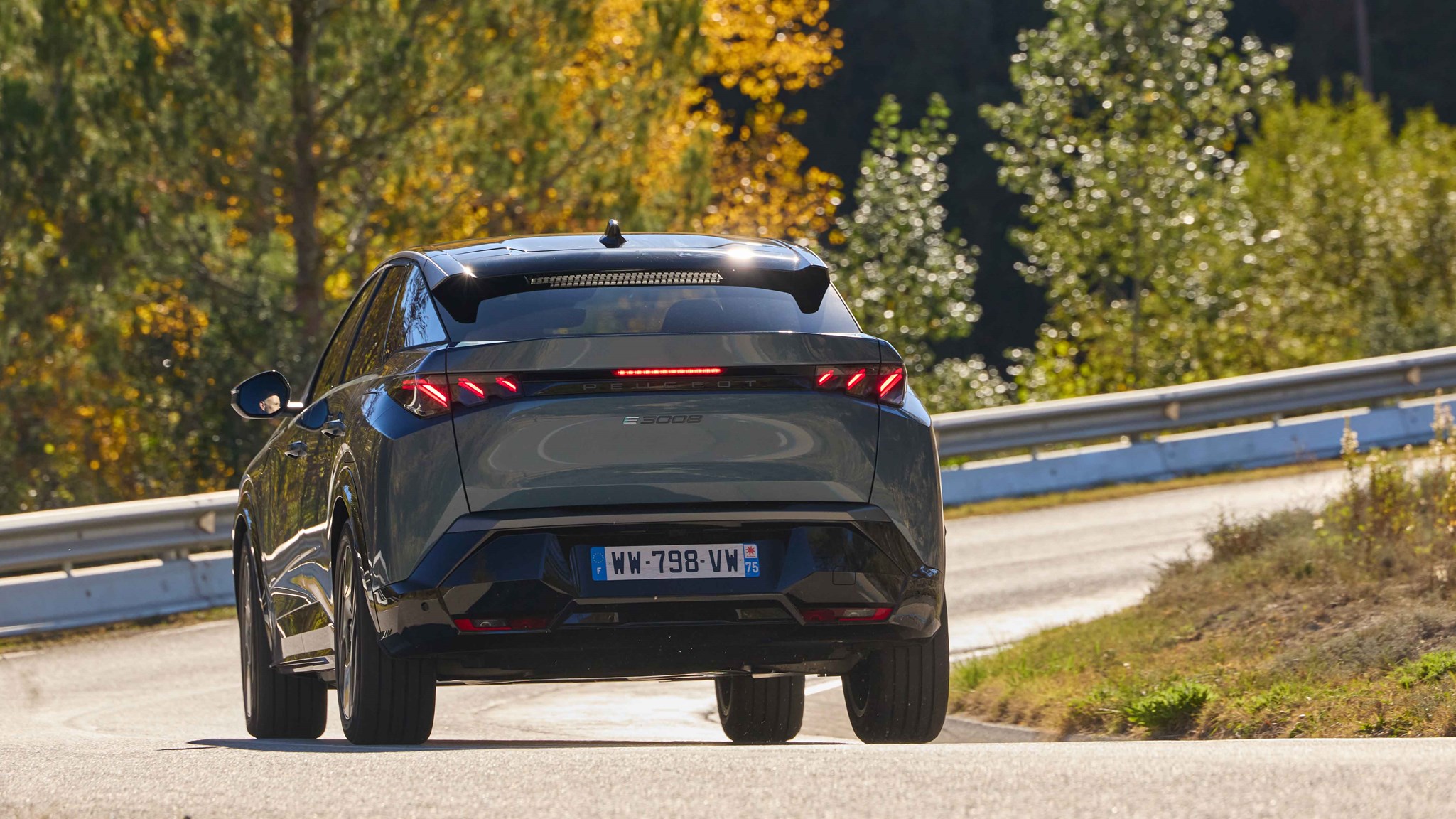
What are the specs?
Peugeot’s big boast is that the E-3008 Long Range can cover 435 miles, thanks to its whopping 98kWh battery pack. That’s a huge distance, until now the preserve of big battery, big price stuff. But it won’t be ready until late 2024, and given the regular version costs £45k and up, you’ll probably pay a hefty sum for that range.
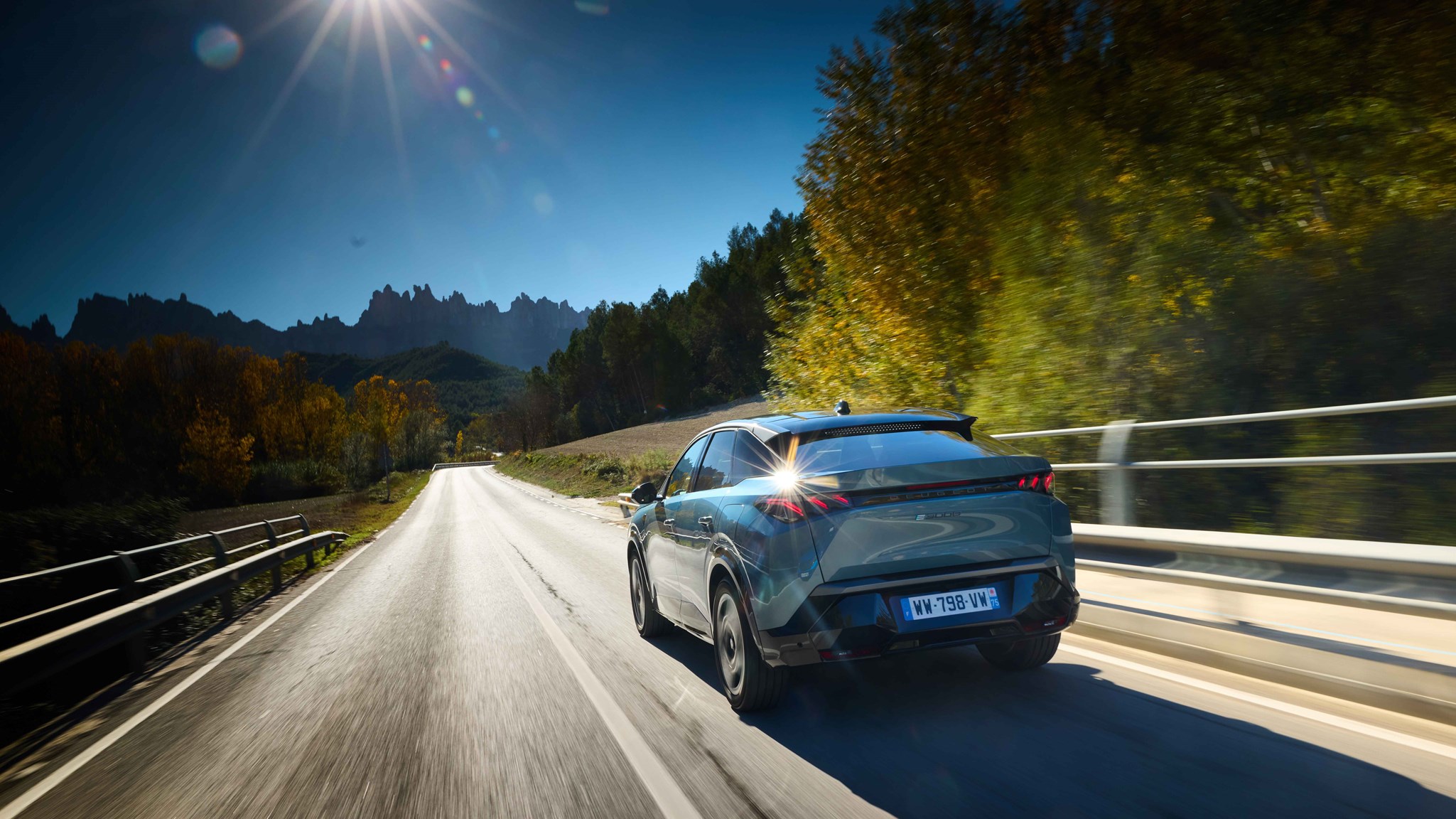
The standard range car, equipped with a 73kWh battery, has a 326-mile range. This uses a 157kW (211bhp) permanent magnet electric motor to drive the front wheels. Don’t expect particularly brisk acceleration, 0-62mph takes a leisurely 8.8 seconds.
An all-wheel drive version will arrive alongside the long-range version. Packing an additional 83kW motor mounted on the rear axle it delivers 240kW (322bhp) in total, for punchy acceleration in Sport mode and E-AWD with hill descent control for trickier terrain. It’ll be coupled with the smaller battery and get from 0-62mph in 6.4 seconds whilst only dropping a couple of miles of range.
Okay, let’s get driving…
So far we’ve only sampled the 73kWh Electric 210 in top spec GT trim costing nearly £50k. This upgrades Allure’s 19-inch alloys to 20s, adds LED headlamps and a host of interior upgrades.
First impressions are of an extremely refined car, with minimal wind noise, a near-silent motor and little rubber roar. You get a commanding driving position (the E-3008 has only 1cm less ground clearance than a Range Rover Evoque), sitting on optional heated and cooled black leather seats.
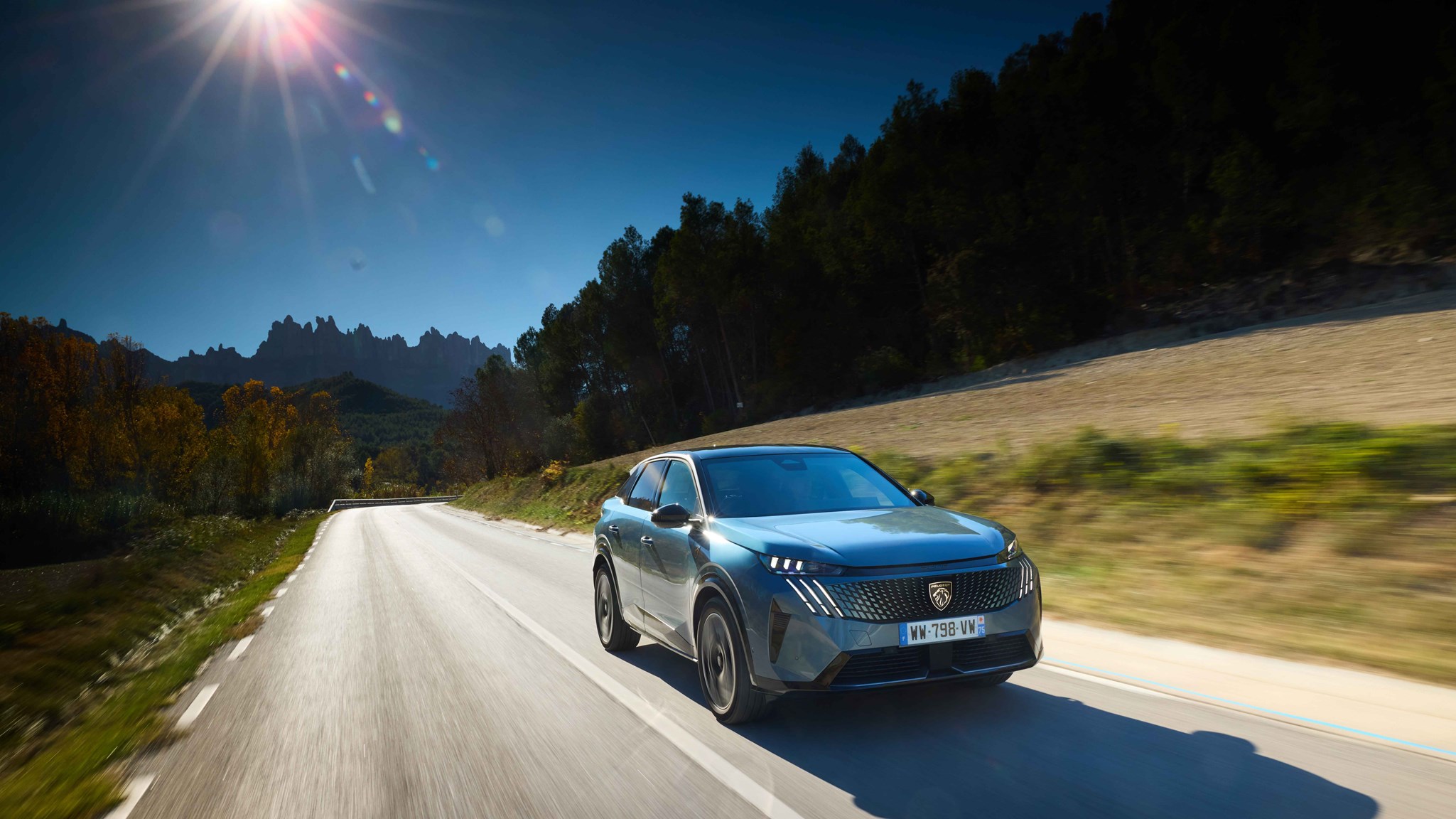
The suspension is entirely conventional with struts up front and an independent multi-link rear. At speed the ride is passable, if a little lumbering in extremis. However, at urban speeds there’s a lead-footed response and jiggly firmness that is at best annoying and at worst downright uncomfortable.
How’s the E-3008 in corners?
Tip the nose into a corner and the E-3008 confirms its place in the heavyweight class. It rolls progressively and does a reasonable job fighting understeer, but this isn’t a car that relishes being hustled along.

But it’s a heavy car for its size despite weight saving measures including an aluminium battery case, alloy bonnet and composite tailgate. The 73kWh E-3008 weighs a shade over 2.1 tonnes, 234kg heavier than the new Renault Scenic with a bigger 87kWh battery. The Peugeot is a similar weight to VW’s ID.4 mind you.
How do the controls feel?
The steering is uniformly light and effortless, which is a step down from recent Peugeots’ quick and surprisingly granular steering. This rack just swings nonchalantly side to side, communicating with all the enthusiasm of a Frenchman you’ve just pestered for directions in English.
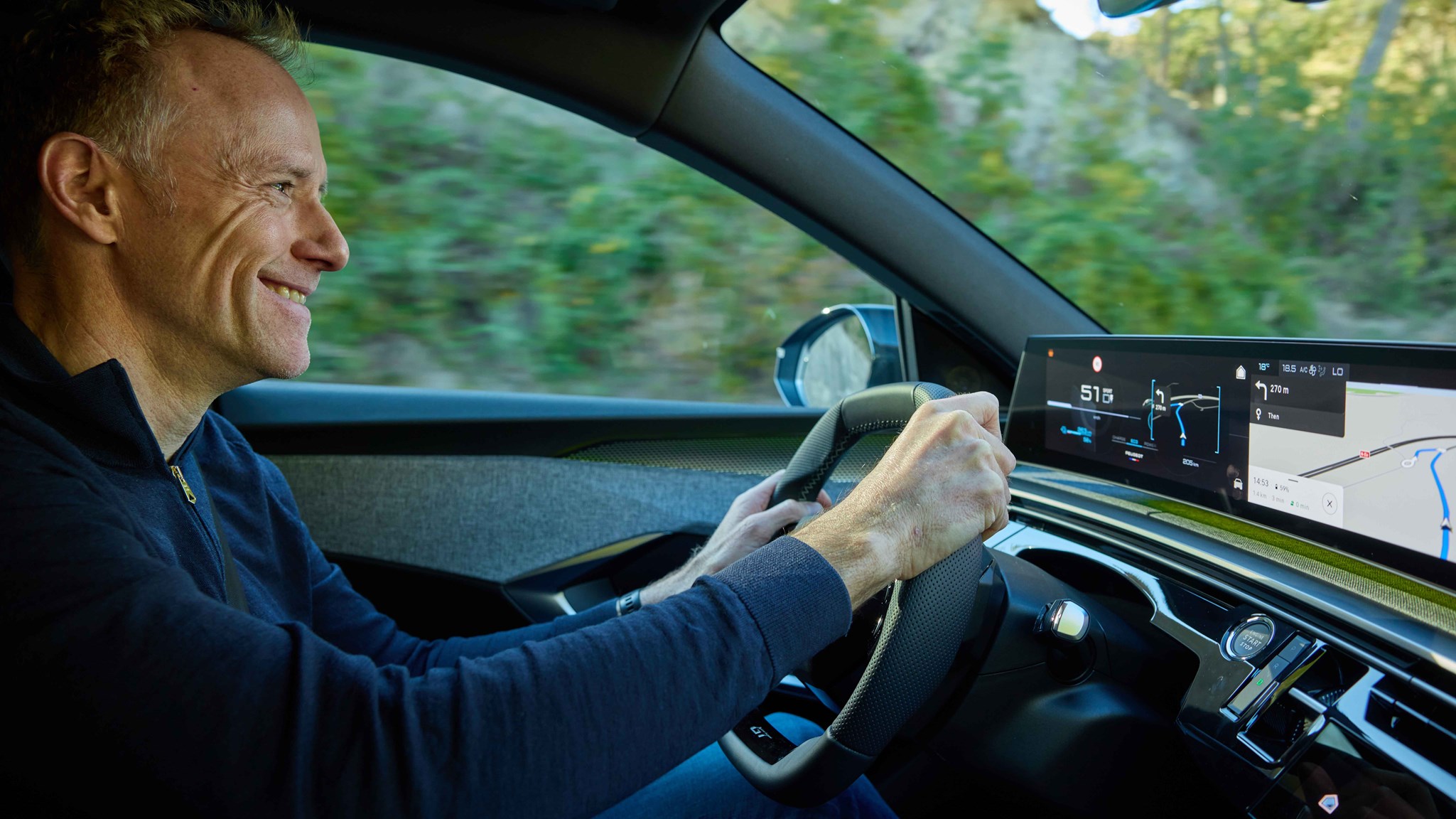
The brake pedal feels spongy but effective, and Peugeot has finally ditched its single B mode for wheel-mounted paddles engaging three grades of regenerative braking. But they could be better spaced and would benefit from an aggressive ‘one pedal’ mode to tip the mass forwards to aid cornering – cars such as Kia’s EV6 and the Hyundai Kona still do e-braking best.
Efficiency and charging
Peugeot claims best-in-class aerodynamics, helping deliver efficiency of 4.47 miles per kWh on the WLTP cycle. The E-3008 goes without a battery preconditioning cycle – the engineers don’t feel it’s necessary – and a heat pump, which reduces demand on the air-con system and boosts efficiency in winter, is only optional.
Maximum DC charging is 160kW, replenishing a 20 per cent battery to 80 per cent in a claimed 30 minutes for the 73kWh model. For AC home-charging, an 11kW three-phase on-board charger is standard but for UK homes limited to single-phase electricity, 7.4kW recharging from 20 per cent to full takes eight hours.
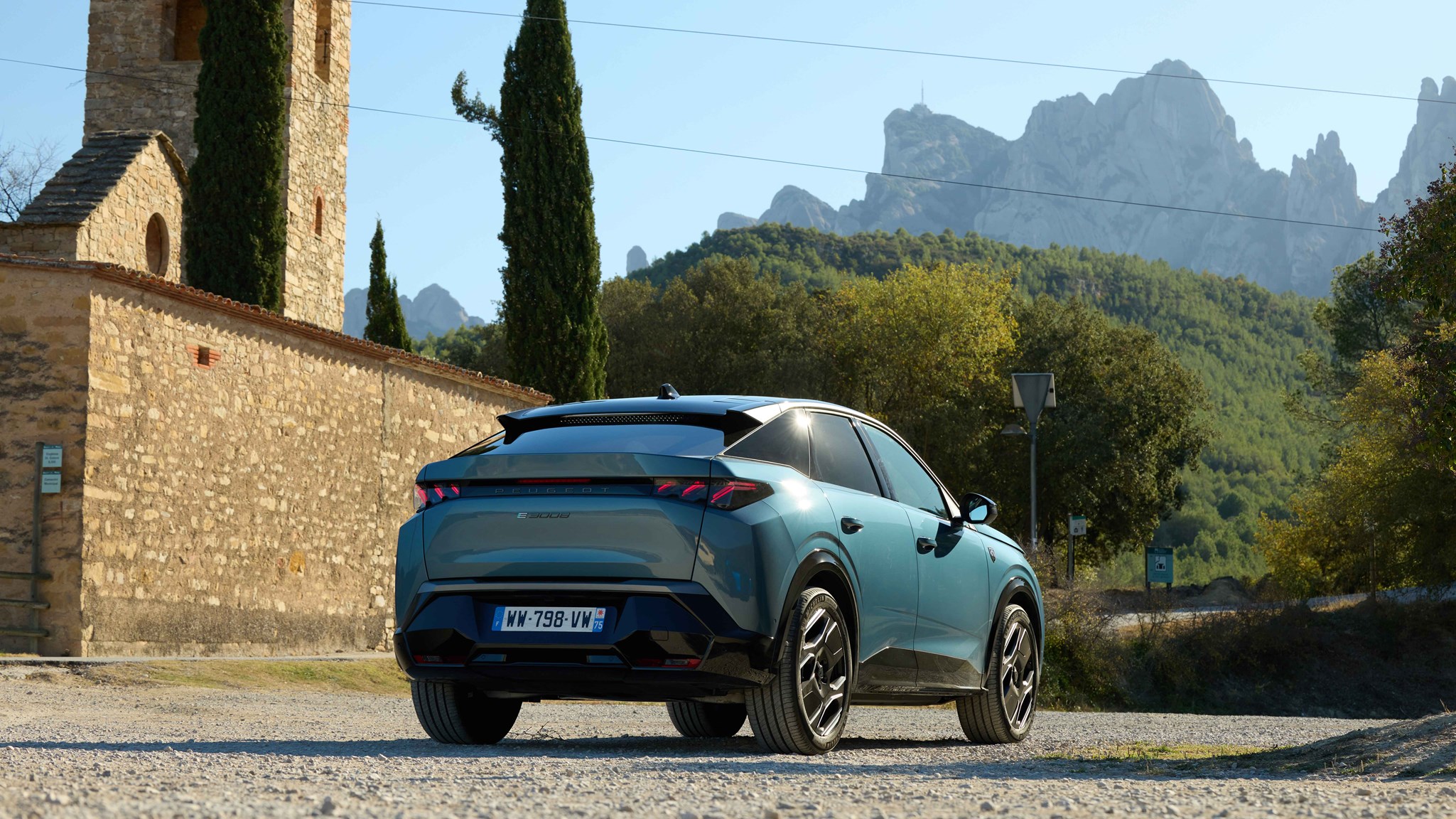
Route-mapping by TomTom takes a leaf out of the Tesla playbook, calculating your route and recommending a specific charging stop (with stopping time) if necessary, and letting you input how much charge you’d like remaining at journey’s end.
What’s the cockpit like?
Peugeot lavishes a lot of effort on its interiors, and the E-3008’s is truly stunning. All UK cars feature a 21-inch screen that combines the digital driver’s binnacle with the main infotainment touchscreen, and is rear-mounted to seemingly float above the dash.
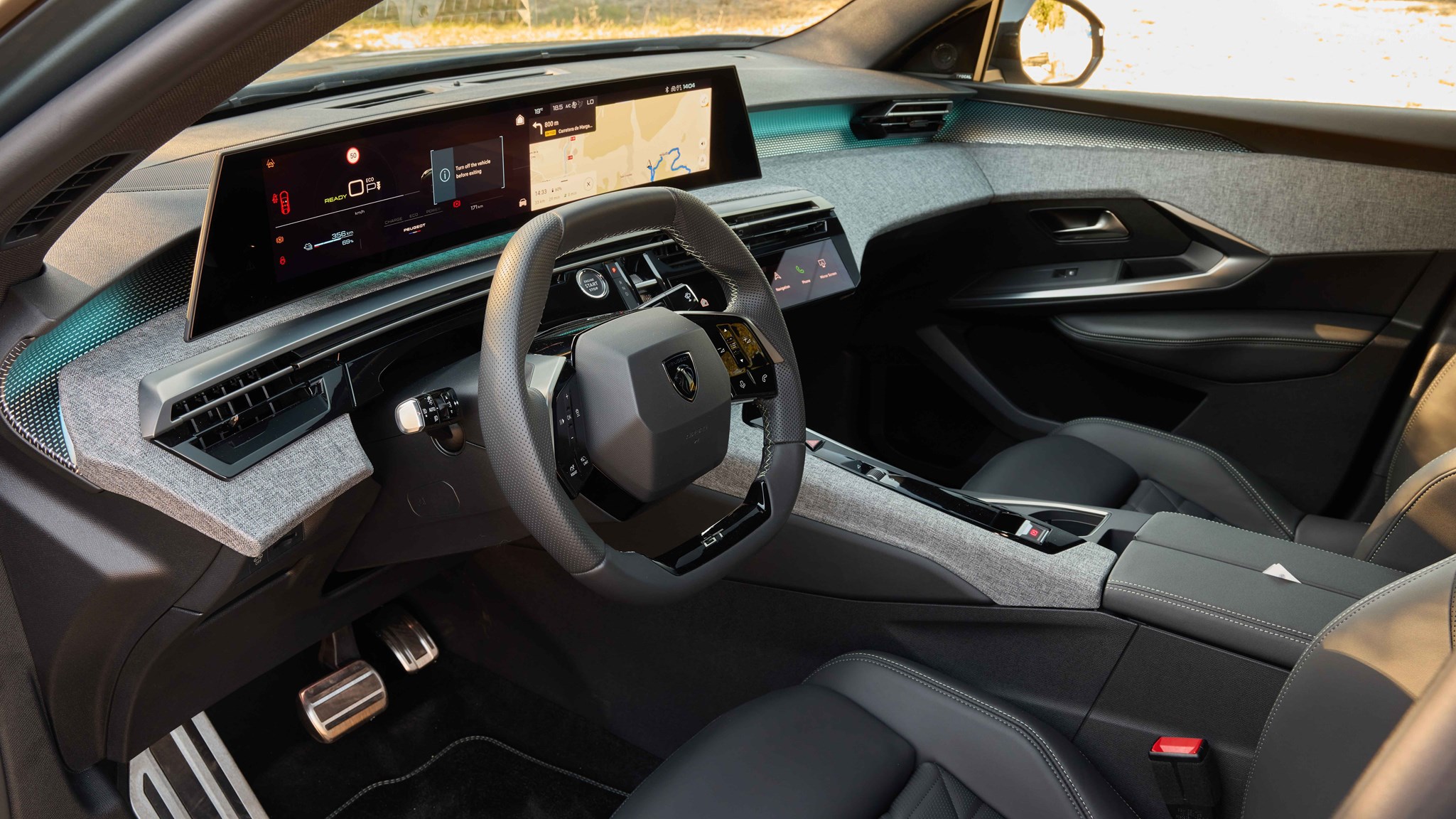
GT models have aluminium trim sections which are bathed in light: blue for normal, green for sport or a colour from the palette. And the dashboard and centre console are trimmed in so much fabric it’s like snuggling down in grey textile sheets.
There are very few actual switches – the gear selector now mounted on the dash, Start/Stop and a volume dial – but there’s a row of five ‘iToggles’ (with another five a swipe away), to access important functions such as nav or media. They can also be programmed as short cuts such as a favourite radio station, important ‘phone contact or going direct to the lane assist or speed limit warning ‘driver aids’ page.
Rear seat space is fine but not bounteous like in rival electric cars; spec the optional glass roof if you have black leather upholstery else the rear feels a tad claustrophobic, though the side windows aren’t too slitty. Headroom is just about enough for a six footer, although there’s very little legroom with a similarly lofty driver ahead. The flat, broad luggage area stows 520 litres of kit and there are useful 40/20/40 split folding rear seats.
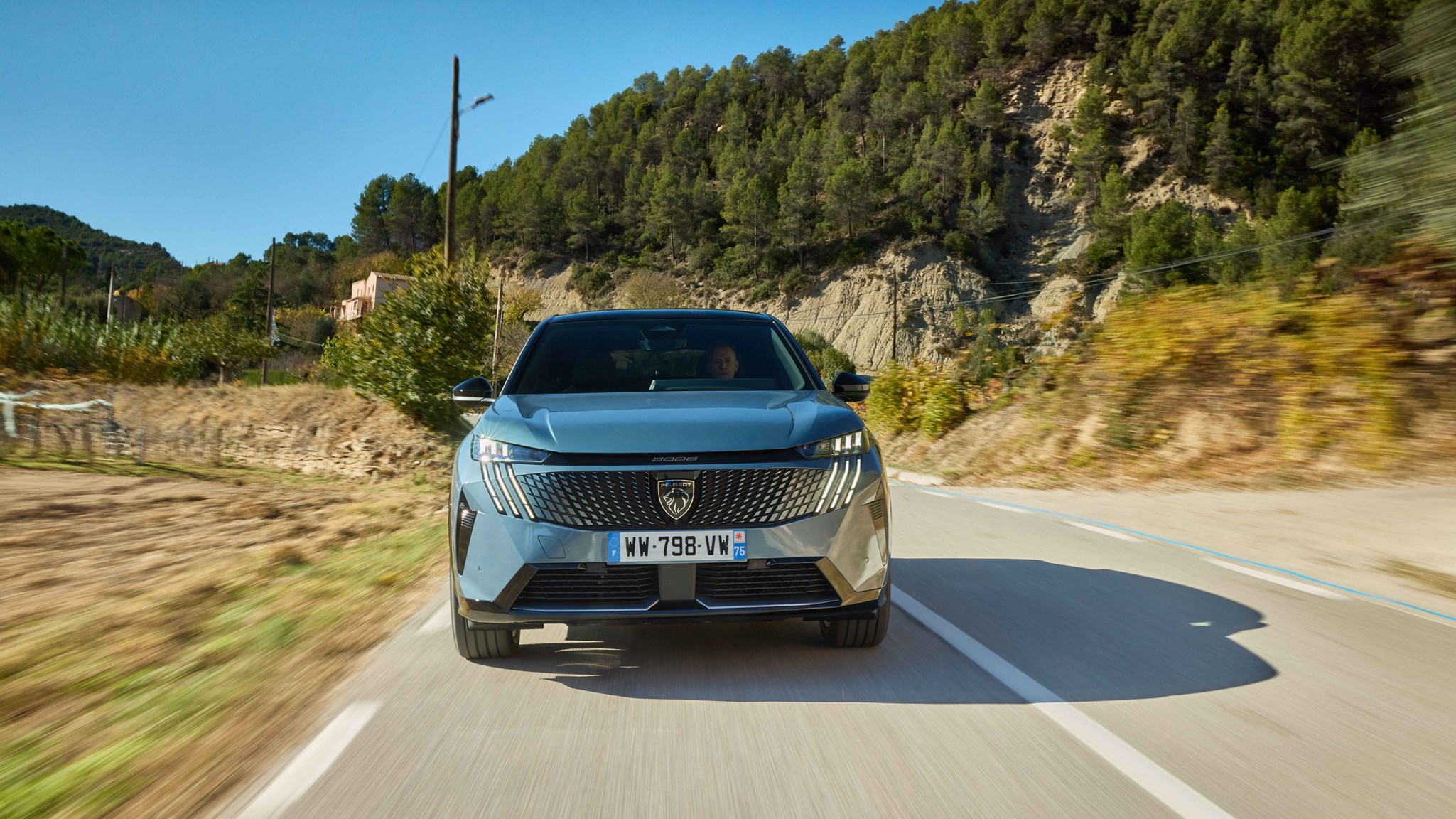
What about the hybrid powertrains?
The entry-level 3008 is a mild hybrid, mating the familiar 1.2-litre three-cylinder petrol with a 16kW motor also driving the six-speed dual clutch transmission. This 138bhp drivetrain will emit 136g/km of CO2 and cost from £34,650.
A plug-in hybrid will also be introduced later in 2024. Peugeot expects sales to be split roughly 50:50 between EV and hybrid models, which is way ahead of electric’s share of the UK market.

Verdict
The second-generation 3008 shifted 1.32 million units in seven years, so the new model has a big weight of expectation. And the new E-3008 is a deeply desirable midsize SUV. The exterior design is stunning with its rakish roofline, shimmering grille, vertical LED strips and muscular proportions.
It’s just as fabulous inside. However it’s heavy, not the most spacious, nor the most exciting and engaging to drive. If cruising in style is your thing, the E-3008 could be one for your shortlist, but there are far better options out there.